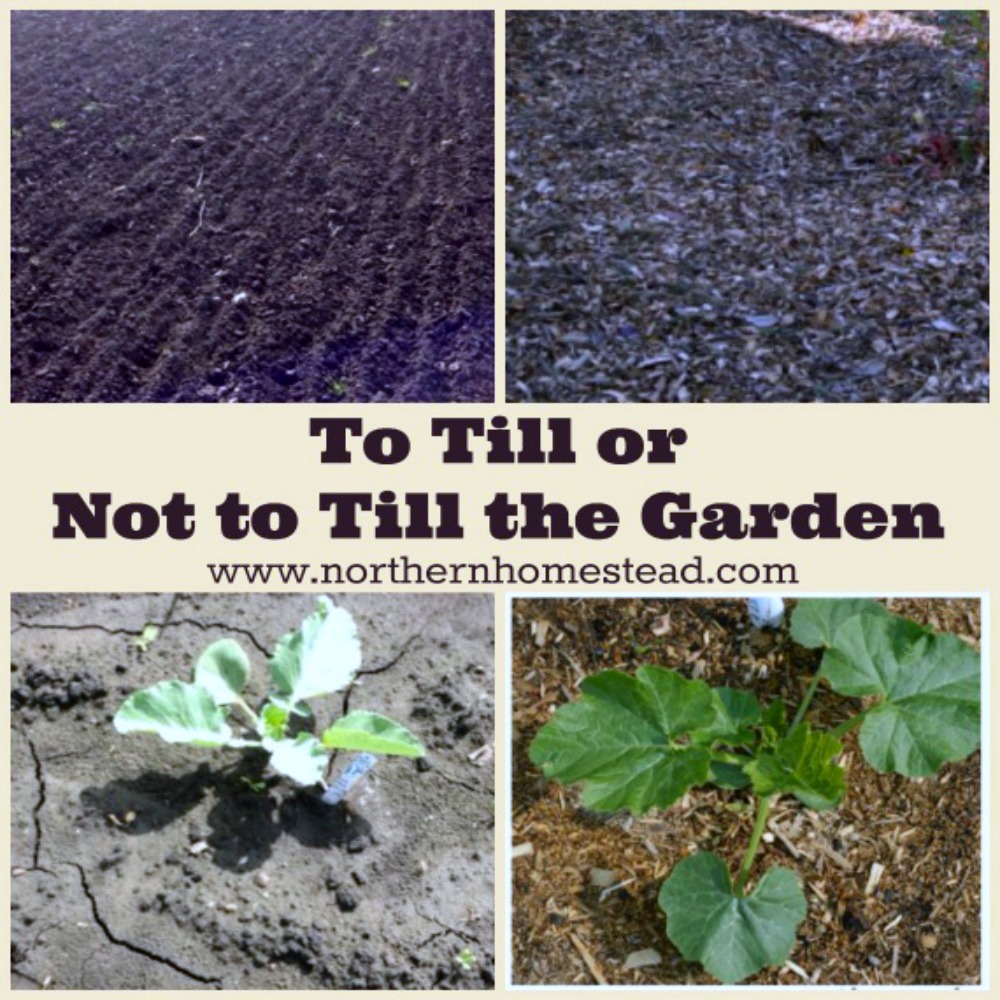
Growing up on a homestead, our vegetable garden was cleaned up, fertilized with composted manure, and turned over every spring. Teens and young adults in our rural town would form work crews to help dig the gardens of those who were not able to do that by themselves. Digging up the garden seemed to be a necessity of life. Today, Rototillers have replaced those working volunteers, doing the job much faster and with less manpower, and yet it is still a big job. But the question remains: What are the good reasons to till or not till the garden for better soil?
The natural no-dig gardening movement is growing with great results. One of the acknowledged no-dig growers is Charles Dowding. In his many books, he shows how no-dig gardening helps with weed control and saves time and work. In return, it produces a better harvest and creates richer soil. Who doesn’t want this kind of result?
Let’s look at the question, to till or not to till the garden, closer.
What is a no-till garden
A no-till garden is not just a garden that has not been tilled in a while. That would be an uncultivated land, and soil compaction would happen rather quickly. In gardening, we call a no-till or no-dig garden where the top layer of soil is covered with organic mulch material instead of being dug up or tilled.
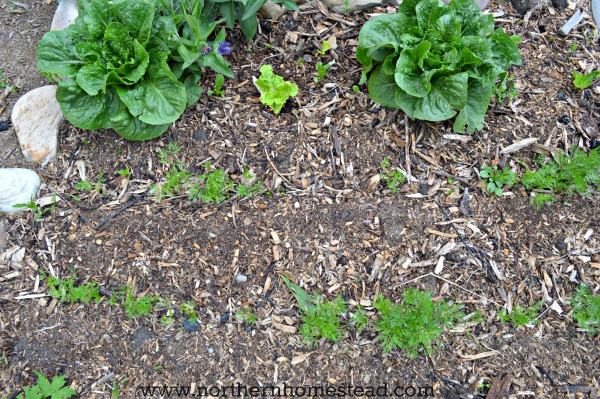
Covering the soil surface with organic material is the key to a successful no-till garden.;
This is very important. If you stop tilling, the soil will be hard, and it will take many years for it to recover. Eventually, nature will cover the soil on its own if you leave it alone. However, a no-till garden must be covered since we are discussing the garden’s soil.
In nature, soil is always covered with dead grass, leaves, and branches that have fallen to the ground, creating a soil food web. What works in nature also works beautifully in the home garden. Mulch creates healthier soil, preserves soil moisture, and prevents soil erosion.
Why not till a garden
Soil is a living organism full of natural fungi, worms, and microbes. Also, the roots of plants in the soil communicate with each other, encouraging each other to grow by sharing resources. That is how very dense forests survive and thrive.
What makes soil so great?
It is not the soil itself – it is the soil life that is the most important element. – Geoff Lawton
That natural system gets interrupted when we till or dig up the soil. Worms get killed, and the bare soil is being eroded by wind, rain, and frost.
If you want to ruin your garden soil health, till it twice a year.
Some argue that tilling should always be avoided. In most cases, it can and should be avoided. However, sometimes, we are dealing with the type of soil that is so hard and already dead that digging might actually be a good thing.
You should till the garden when …
…the garden is bare, with some weeds, dry and hard, and it is time to plant. We are talking here about an existing tilled garden. This is the situation for a traditional garden plot. My parents’ garden looked like this every. single. spring. Maybe your garden looks like this, too.
This is the time to till or if needed double dig your garden beds for the very last time. Tilling brings immediate results to the soil structure to create fluffy soil fast, till it and plant. But after the harvest in fall, you can convert your garden into a no-till garden. If you cover your garden with layers of organic material, you will never have to till it again. In the following years, the health of your soil will get better.
You have two choices: to till or to cover your garden soil with a thick layer of mulch. Tilled garden soil wears out over time, and covered soil builds up and improves.
If your garden has some serious weed problems and does not drain well, there might be a deeper problem. In this case, read more in no-dig or double dig?
You can till your garden when …
… you have a new garden area. Most no-till gardening methods recommend just covering the area with cardboard and/or newspaper, add compost and mulch and it is ready to be planted.
We would recommend starting with a simple soil test for the existing soil. Dig up some dirt to see what your soil layers are like. If you have a deep layer of compacted topsoil. We did that in our backyard garden, there were about 2 feet of tops soil, overgrown with lawn and weeds, and very uneven.

If there is very little topsoil, and you soon reach the hardcore of subsoil, do not till and mix the topsoil with the subsoil. Double digging might be a better option. Brett L. Markham in his book Mini Farming: Self-Sufficiency on 1/4 Acre compares double digging a new garden to a no-till garden system. In 3 years there is no difference, but he says digging helps to speed up the process.
If the soil is very hard, weedy, or of poor quality, you want to start with a thicker cover. While converting a hayfield into a garden, in the 20×50 ft trial plot we used 3 different coverings. If you are starting a new no-till garden, head over and read it.
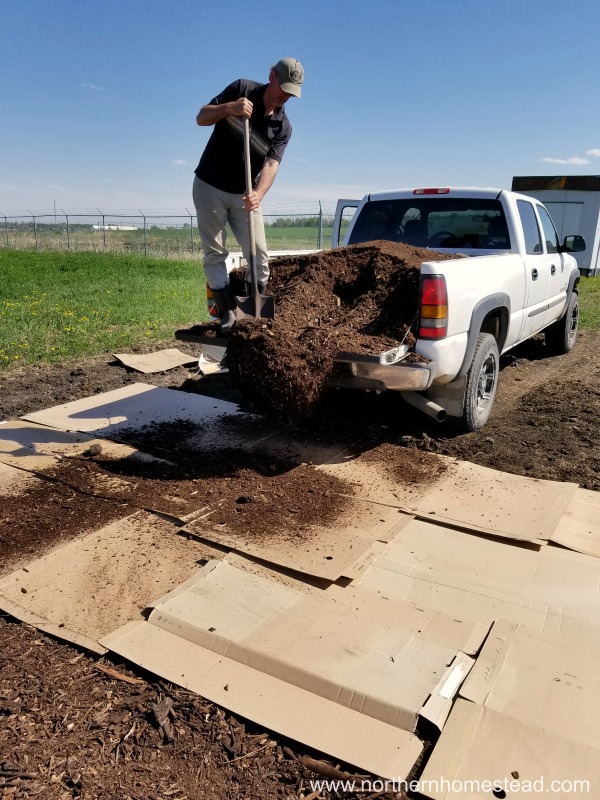
In the case of heavy clay soil tilling might be a good idea, cover the soil with compost, and till that in. It will help build the soil but can not replace the fungi a tilled garden is missing out on. Also, make sure to still mulch the garden to build healthy soil til the next spring, and repeat. Growing cover crops that you till in can be a good practice, too. Over time, you might go from tilled clay soil to great garden soil that you will not have to till any longer.
You do not have to till your garden when …
… you want to build up great soil for many years to come. Even though tilling can help you plant an immediate garden, it can ruin your garden soil in the long run.
Intense gardening in the same spot, year after year, is easier if you do not disturb the soil with constant digging and tilling. Roots in a tilled garden always hit the hardcore at a certain depth, then split and compete.
Weed seeds brought up through the tilling will grow, and after a few short weeks, the freshly tilled garden will be just as hard, dry, and weedy as it was before the tilling. It’s a real vicious cycle. You can break that cycle up by stopping the tilling and covering the soil with organic matter.
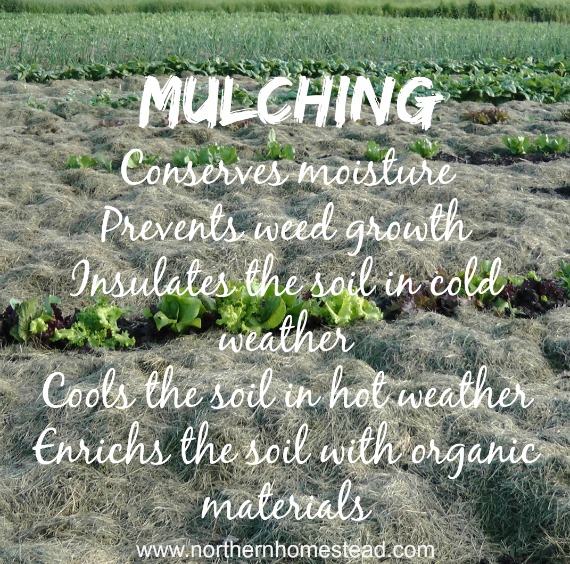
What to cover the soil with?
Covering means placing a layer of natural material on top of the existing soil without working it in.
Use natural mulch such as compost, rotted manure, wood chips, straw, grass clippings, or seedless hay for covering. You will need 1-2 inches (3-5cm) of compost mulch to cover the soil in late fall or early spring.
The best and easiest cover to work with seems to be well-matured and sifted compost. It can be an all-plant compost or a mixture of well-rotted manure and compost.
Wood chips work well for mulch in a dry climate; make sure you use the right wood chips for the garden because you will be planting into them in spring.
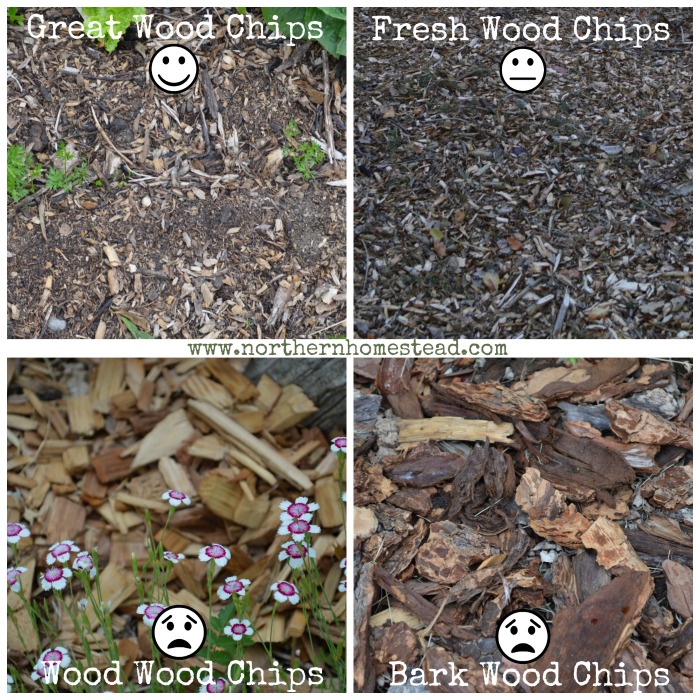
Seed-free hay also makes a good natural cover. It will decompose quickly and enrich the soil in the process. Straw is another option in the same category. Make sure to break up the straw so it is light and airy.
The cover will keep the soil moist and soft and the weeds down. There is no need to till or dig up the garden in spring. As soon as the snow melts, you can start planting. The soil will not dry out, and weeds will be suppressed.
If you feel like the soil is still hard you can work it with a Broadfork, or simple garden fork. Do not turn over the soil just loosen it. The covered soil is maybe not as soft as freshly tilled soil at the top, but is much softer all throughout than tilled soil will ever be.
You do not have to till your garden when your soil is covered.
When to apply mulch
Tilling was needed every spring, and some gardeners also tilled in the fall. Mulch is also needed every year. When the garden matures, you might be able to skip a year to see how the soil is. A mulched garden soil should always be soft and easy to work with.
Late autumn is the best time to apply mulch for most home gardens. That’s also the time when nature covers the soil.
Winter often comes very suddenly in our short growing season, and snow covers the soil. We often do the mulching in early spring.
I hope this helps you understand tilling and no-tilling the garden for better soil and enables you to have a productive garden with less work.
Here is some good information on no-till methods: Organic Gardening, Back to Eden, Gardening without work.
We invite you to subscribe to Northern Homestead and follow us on Facebook, Instagram, or Pinterest for the latest updates.

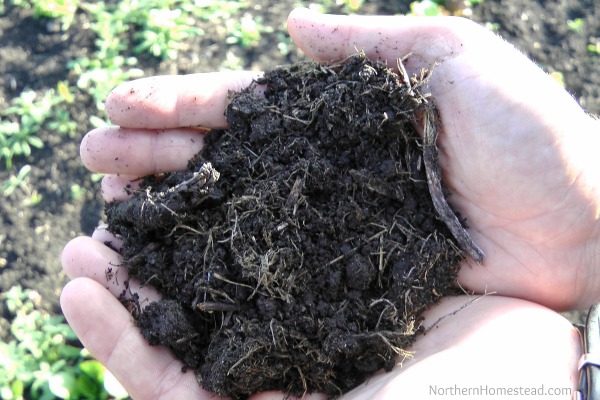
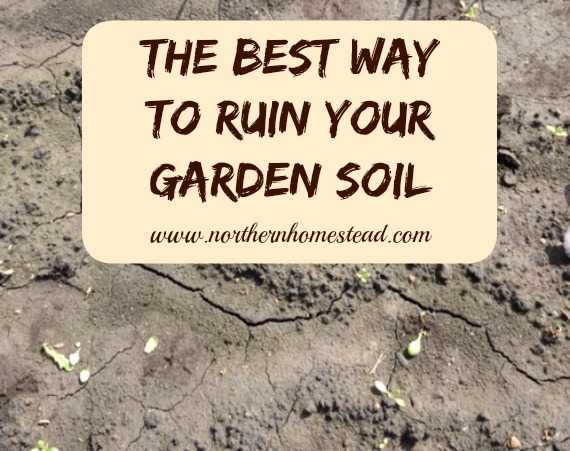
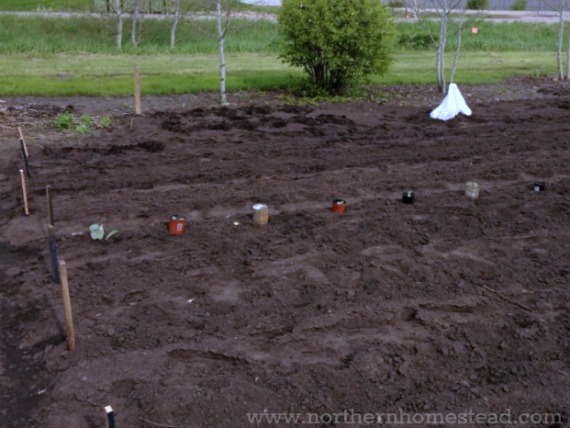

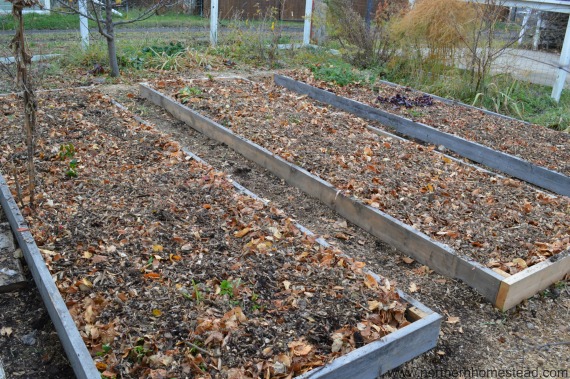



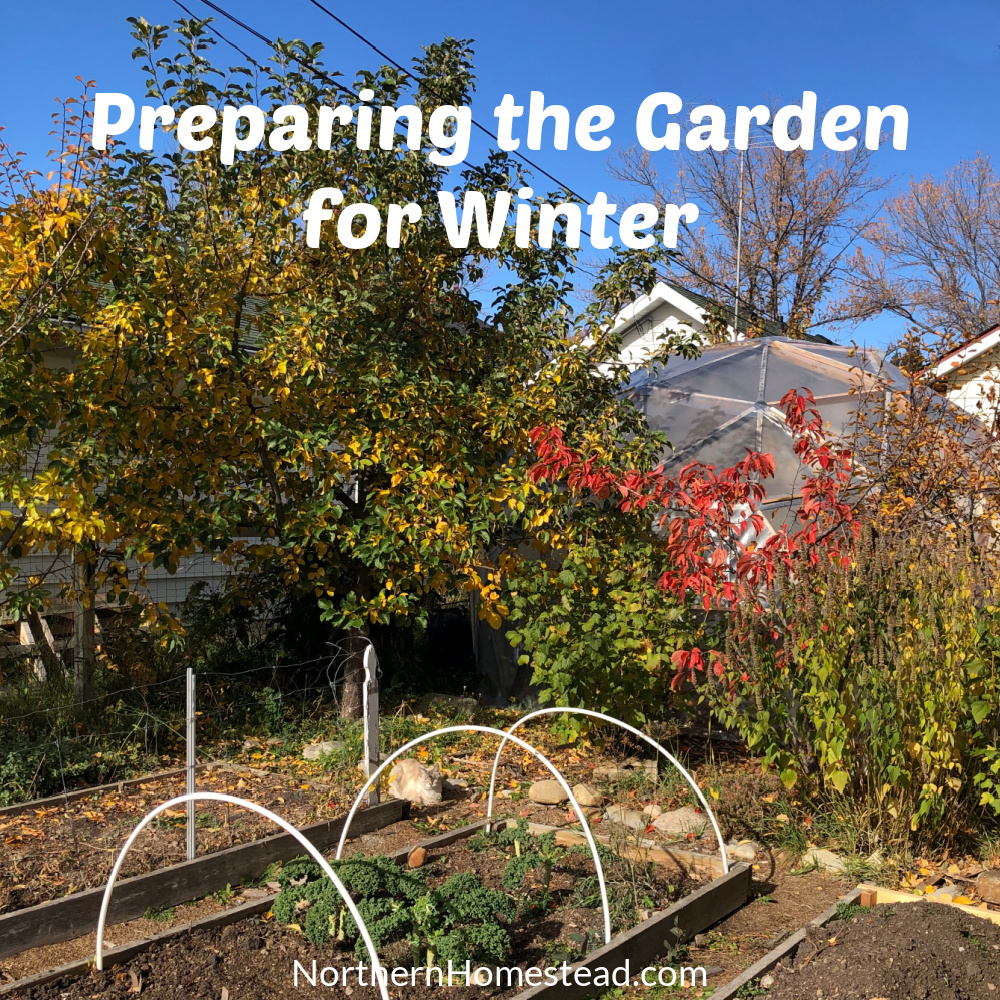


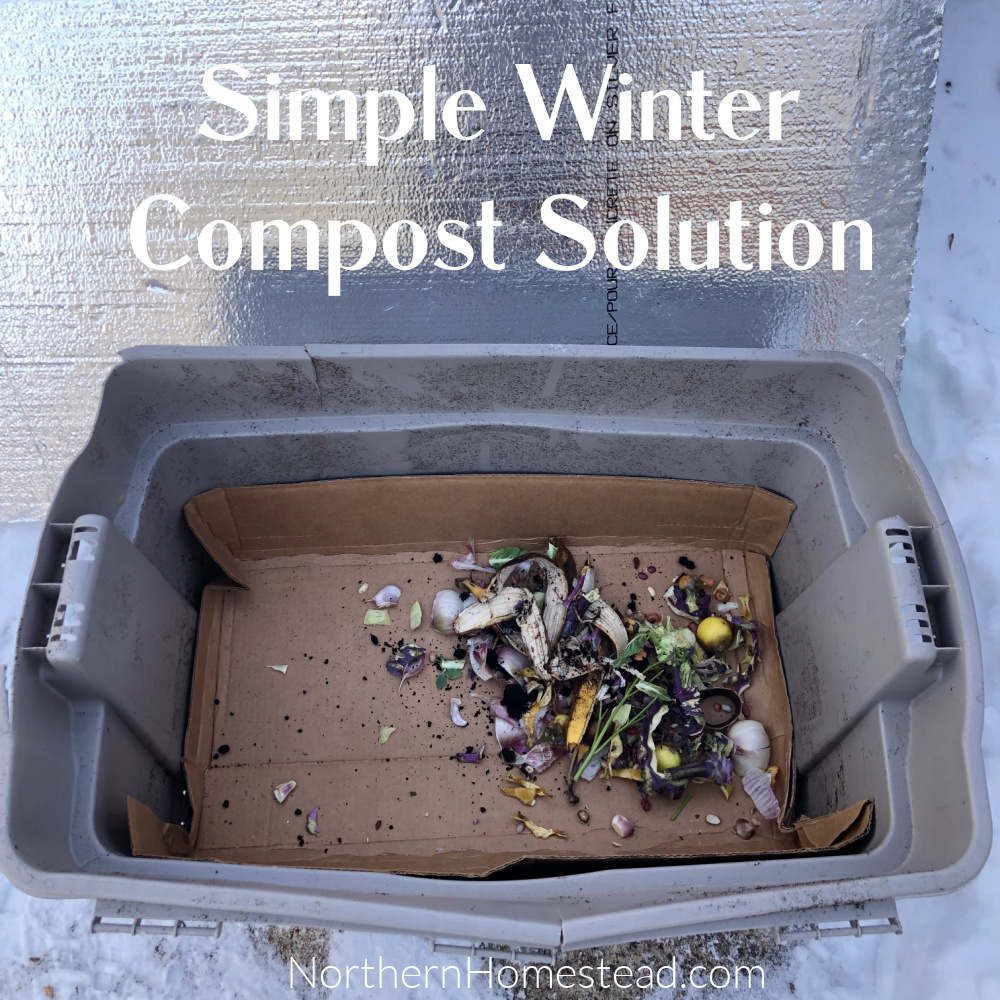
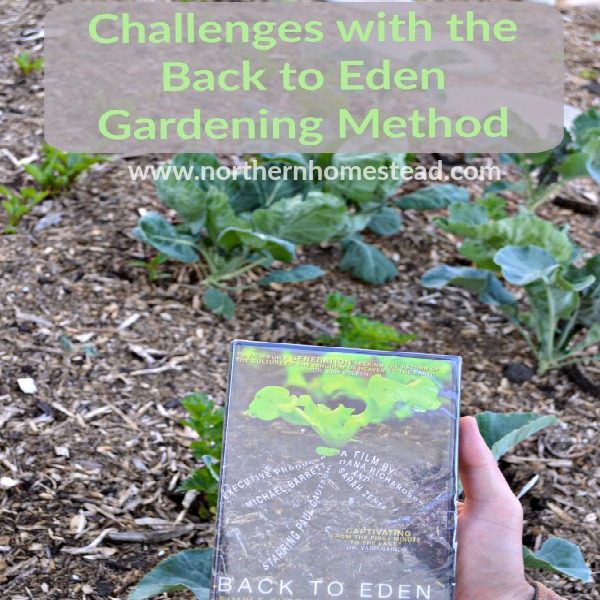
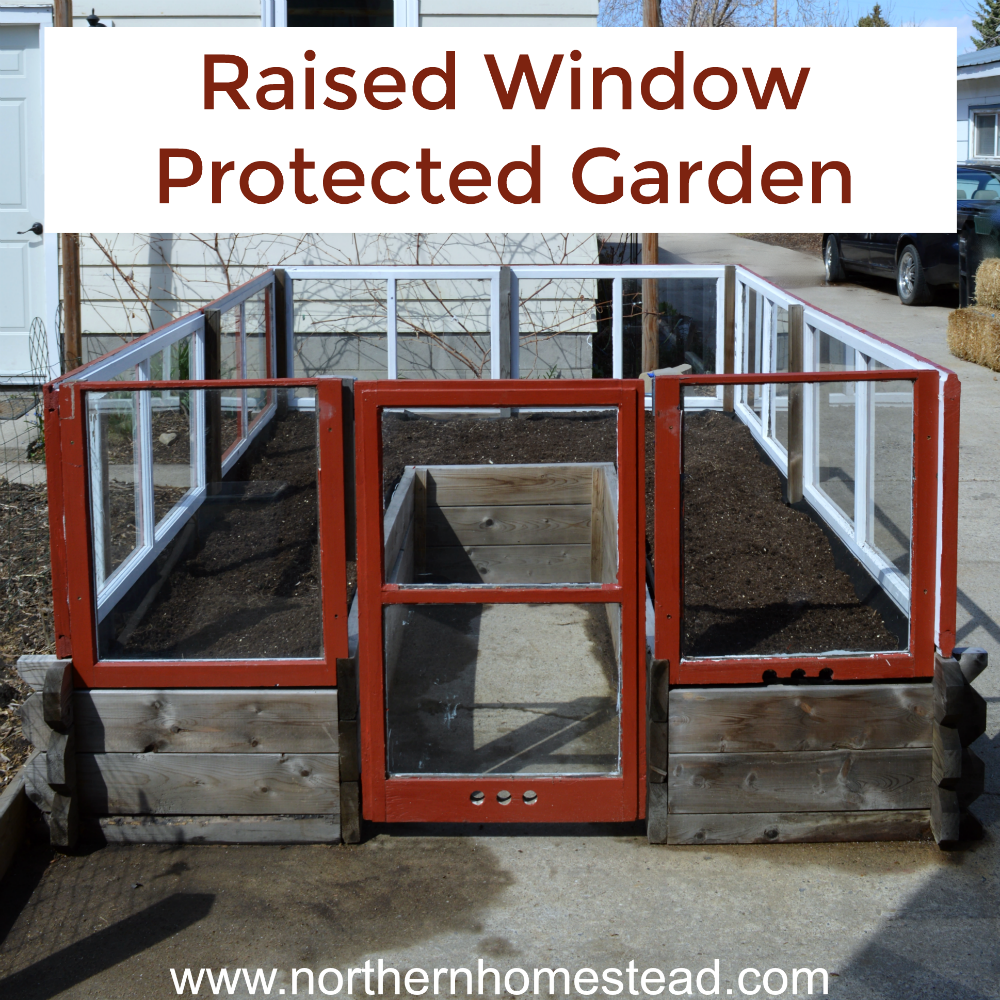

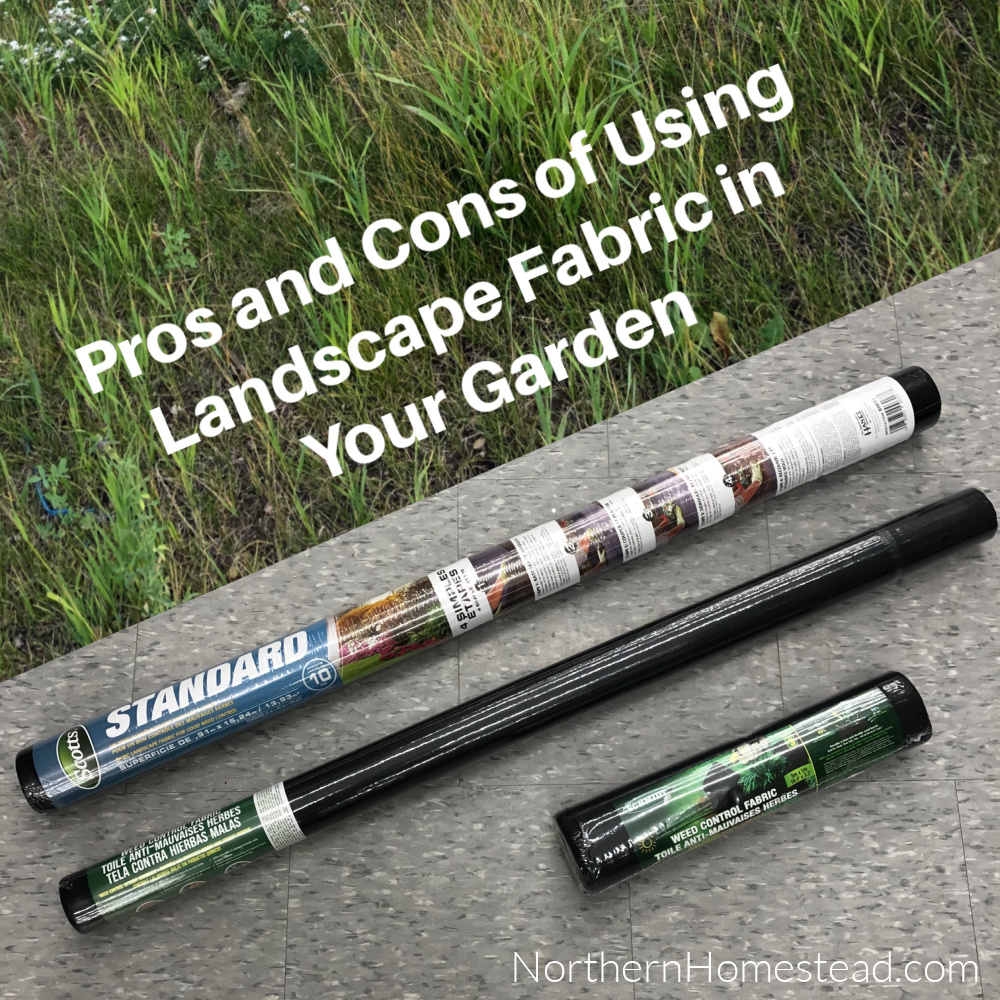
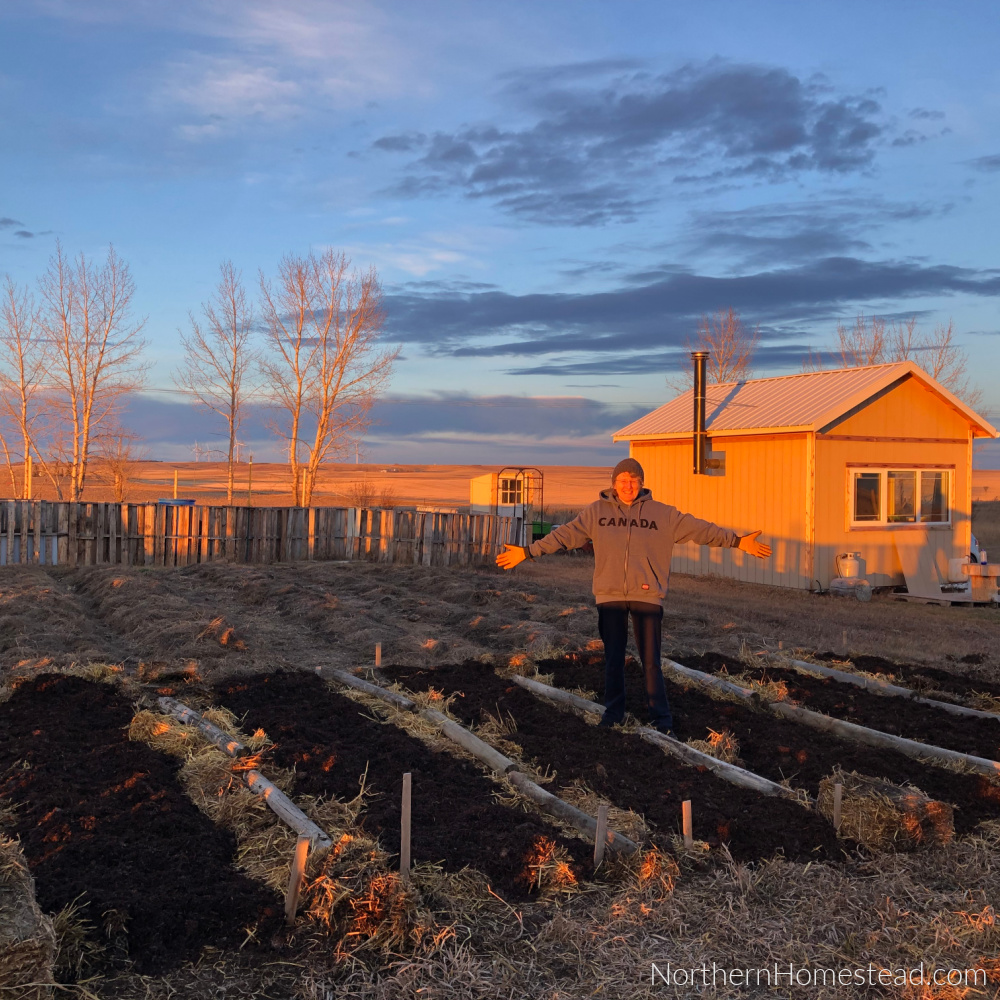

Anna,
Consider me challenged. I know your intent wasn’t really to challenge just to give a detailed explanation of the benefits of a no-till garden. But I really do want to have the best soil, so I am going to have to do my research come this fall about how to add mulch rather than tilling. We are gardening in a 5000 sq ft space, and 75% of it is new this year. So we had to till it, but that practice doesn’t have to continue (my hubby would be thrilled!). I am just going to have to figure out how to a no-till garden in such a large area. Great info! I have seen that this is something you do, it is nice to understand the reasoning.
Congrats on your new big garden! The Back to Eden Film is a great examples for a big mulched garden. It sure would take lots of mulching material, but so worth it. Also the marketgardener has a big ‘No till’ garden with a different approach, worth looking into. Happy gardening!
Great info!! I am new to gardening so this is great info for me! <3
Congrats on your new gardening adventure. We are glad to be of some help.
We’re starting the Back to Eden gardening method this spring. I’m so excited to get it started. We decided, since we’re doing our best to keep it all organic, that instead of putting down chemical-laden newspapers, we’ll till and then put down the mulch. Glad to see I’m not the only one doing it. Thanks for sharing on the Homestead Blog Hop!
Congrats on your new garden! So excited for you. We are adding more mulch to the perennial garden this year. I just love it! Happy growing.
I’m so happy to read this article. We till at the garden we have at work even though I am not a fan. I do not till my backyard garden and I’ve noticed how many more worms and beneficial insects I find. Wonderful information!
Thank you for sharing this, some people still believe tilling is better. It is nice to hear from experienced gardeners, that it is not.
We did a no-till garden this spring, and it’s been fantastic! I’ve been SO impressed with the results from just one season with our sandy Florida soil. I’m glad to see more and more people using variations of this method, it’s really the best.
Thanks for sharing at the Homestead Blog Hop!
Glad you tried it, with years it will get even better.
SO glad to read in the comments the number of people trying a no-till method. Soil creation is the top challenge in our environment today, since soil loss through tilling is literally killing our soil and poisoning our food.
For all the folks trying a no till method, especially the back-to-eden method, give it a few years. Don’t expect amazing results the first year, even if you till before mulching (hopefully in the FALL). If you can, in the first year, plant the whole garden in legumes like beans or peas in order to structure the soil and boost nitrogen (or intercrop with beans or peas). Then just leave the plant waste on the surface to break down. You’ll wonder where it went come springtime.
Thanks for a great blog! Keep sharing the wisdom!
Galen
Thank you for your encouraging words.
For years I have tilled the soil but no more!
Now I lay down cardboard, put boarder around it, sprinkle in compost and plant, this is so much easier.
It sure is easier, and if you also know that it is so much better, it is a win, win.
When you say you put down cardboard, do you mean shredded or a whole, intact piece?
Whole pieces, the idea is to suppress weeds from coming up, shredded would not do that.
Excellent advice. I do a mostly no-till garden, but some areas get really compacted after winter, so I have no choice but to break it up a bit in order to be able to plant. Next year I am going to try adding straw and compost in the fall so I can hopefully be completely no-till.
We have to deal with Orange Hawkweed and Burdock at the 60 degree of latitude, and zone 3+ temperatures. These have wiped out entire hayfields and propagate any which way they please. Do you have any suggestions as to how we can get rid of these pervasive and troublesome weeds? We are also concerned about the compaction of soil as we walk over it to plant and harvest. Can you help us answer these questions for a successful vegetable garden?
I’m not familiar with the Orange Burkweed, but as with all weeds you just have to clean the garden. It will involve more weeding at the beginning. Adding 4-6 inch of mulch will help to weaken the weeds. Everything that still comes up should be easy to pull. Walking on the growing soil is not a good idea. Make permanent beds with dedicated phat ways. It can be 2-3 foot rows or 4-foot garden beds so that you reach in from both sides. You can mark the pathways so everyone knows where to walk and where not to walk. Hope this helps, happy gardening!
I have raised beds as well as a no-till portion in my well established garden. Last fall, I covered most of it with chopped leaves, and the rest was still covered by the wheat straw mulch from the growing season. I’m soon to get a load of rabbit manure to spread over all. My question…should I remove all or most of the cover before spreading the manure? Should I fork it all in, or just plant through it?
In a no-till garden, everything is just layered on top of each other, no working in is needed. However, it is still your garden, if you feel that it would make the garden more pleasant for you, work it in, but just in the top inch or two.
This content was very informative. I am a beginner garden in that I am just now trying to take my planting to the next level and actually feed my family fresh veggies. My husband just made me a fenced 18’X24” bed. There’s a thin layer of clean topsoil and we just recently placed six inches of compost topsoil mix. Under all of that is clay. I am hesitant to rototill because I’m afraid of messing up all that good soil with clay. Can I reasonably not rototill or should I. I’d hate for all of my work to go to waste? To till or not to till?
Congrats on the new garden. Not to till is the answer for you. You right, if you till it you will just end up with pure soil. By mulching, leaving the compost on top you (or more correctly the life in the soil) will build good soil, just keep adding mulch on top.
I’m curious as to how you deal with cover cropping. Last fall we planted Winter rye that now needs something done with it. I prefer the no till method but not sure what to do now. Also, we soil tested and need to work in plenty of amendments. Can I get away with not tilling them in?
With our short growing season, we do not plant a cover crop. We use all the growing time for the main crop. Here is a post by the Old World Garden Farm that covers your question.
and how do I add compost IN the soil without mixing it with the native soil?
You do not have to add compost in the soil. Just put it on top and earthworms will do it for you.
I live in northern Minnesota with a garden in the only place I can get the most sun, which is peat bog. We have always tilled the garden in the spring and each year the weeds get worse. This year was a wet cold year and the clover and grass, which I have never had before, took over. How do I keep them from coming back next year?
You have two options, till and weed, or cover, cover, cover.
This was our 2nd year with a 24×28 garden at latitude 45.6. It was a well- established garden before we bought the house, but the previous owner used lots of Roundup, and I prefer to garden organically.
The first year we tilled, and the ground got hard from the rains. Had to keep tilling. This year, I used straw mulch, and had good weed control between the rows, but still had to do a lot of weeding right up next to the plants. I don’t have time for that!
Landscape fabric worked better for the carrot patch.
So now it’s fall. Here’s the plan: pull the remaining weeds, leave the straw, dont till, instead dump several inches of shredded leaves into the garden and spread it out. Should we dump the whole compost pile in there, too? Then, in the spring, use straw mulch again? Or should we wait to add the compost until spring? Thanks in advance.
You can add the compost now, it will protect the soil and feed the microorganisms in your soil. If you got a few inches of compost cover, you would be fine without adding more straw, just see how it goes and add as needed.
Hello. The last two years I’ve added leaves to my garden beds in the fall. Because they aren’t shredded I find that Come spring they are thick and matted in many spots and much too thick and wet to plant through. I clean everything out, use a broad fork, without turning over the soil, then add compost, and plant. Should I find a way to shred the leaves first and then the idea would be that come spring they would be broken down enough to plant right in? It seems you’d need pretty clear soil to plant small close together seeds. So you’d wait to add more mulch after the plants come up through the ground a bit? Thanks! I’m going to order Charles Dowdings book!
Yes, you can shred the leaves in the fall, and they should be good in spring. However, even better is to mix the leaves with wood chips so there is air in between, they can’t compact so much. Personally, we use leaves as cover for tender plants in the fall, add them to the compost bin in spring, and they are ready to be added to the beds the next fall.
I grow veggies in 15 gallon pots BUT I can’t afford to change the soil each year. (I grow approx. 15 pots). I’m supposed to rotate the soil to grow the same veggies in the same family (tomatoes, peppers etc.) Can I just amend the soil, and with what? If this is not possible, could I re-use the veggie soil for the next year’s flowers?
Great question, thank you for asking. I will address it in my next blog post, stay tuned. The short answer is, yes you can and should reuse the soil.
Sell your tiller and buy a good mulching mower like the Honda twin blade, with a rear bagger. Mow everything you can- grass, leaves, even forest areas with small woody growth (up to 1/4” stems- pencil size- won’t hurt the mower). This mix of chopped and shredded material in the rear bag is an awesome soil amendment/cover. If you just have grass, layer it with wood chips and manure, 2 or 3 inches of each at a time. If you live near a brewery, spent brewery grains make an awesome soil builder and worms love them! Just plan to cover them because they tend to be quite aromatic (not in a good way). They will also attract black soldier flies, which is a good thing. The flies lay eggs and the larvae will eat and break down the grains, much in the manner of earthworms.
I mulch with grass clippings and have a huge problem with slugs. Suggestions?
In areas with a slug problem it is better to mulch with compost. Same idea, you just layer it on top of the soil, but it doesn’t attract slugs as much.
Love this article and well written. Since I’m a grammatical nut, please differentiate between “till” (a verb) and “until” (time oriented, or the contraction ’til). Several times you write till when you mean until, and you have the word till several times in a sentence with both meanings, which can become confusing. Otherwise, an excellent job. Looking forward to this Fall ’til I have to till some more.
Thank you, Frank! We are not native English speakers. In fact I started the blog with the aim to improve my English. To have a grammatical nut reading and still somewhat enjoying the blog is a huge compliment. I’m always eager to learn :).